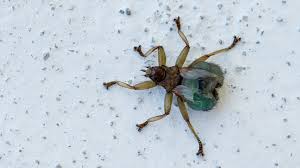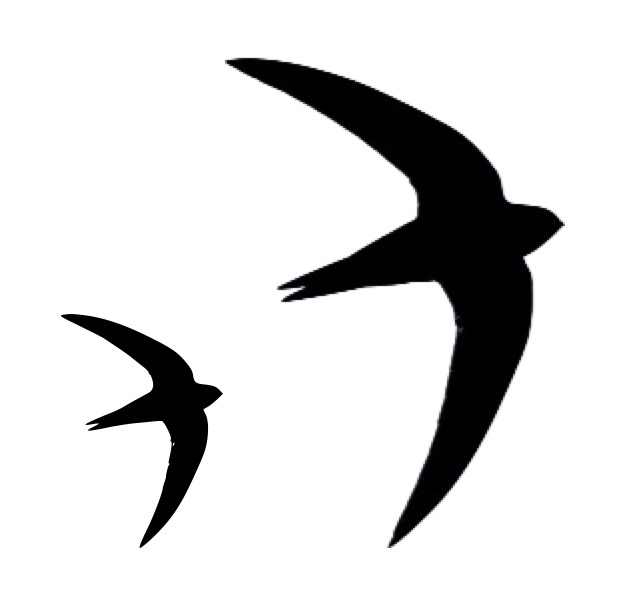The ugly side of things
11/06/20 13:22 Filed in: swifts,nest sites
Things are said about swifts which are not all verified, mainly because what swifts get up to on the wing tends to happen well out of sight. The use of hyperbole to emphasise what amazing creatures they are is quite forgivable but that should not be allowed to detract from the many astonishing truths.
Such as their ability to fly at incredible heights. For feeding they need to be versatile and able to seek out the "aerial plankton" however high it is. Around 3000 metres is not uncommon, 6000 metres is not beyond them and they have been seen flying at or near that height when migrating. They sleep, mate and drink on the wing and only land for nesting. If they land on the ground it is usually a mistake and they will struggle to take off again and often do not succeed.
Juvenile swifts, when they fly for the first time, will probably not land again for three years! In a paper by Jan Holmgren in the 1980s they noted that near Skurup in Sweden gathering juvenile swifts were seen roosting, en masse, on trees and on a pylon. This atypical behaviour was thought to apply to swifts migrating from the furthest reaches of their northern spread and possibly related to some swifts adapting to nesting in holes in trees in northerly unpopulated areas.
Today I thought it might be a good idea to try to add some clarity to the often stated assurances that swifts are clean and safe and do not bother people or make a mess or subject people to health risks. This is largely true; if you have hosted, by choice or otherwise, swallows, martins, starlings or pigeons you will know all about what constitutes a mess. Though peacocks are a whole other thing!
I have said on the web site how swift nests rarely involve the swift being "inside" the building and swift boxes are invariably either on the outside or inside but sealed. So the chances of anything in the nest escaping into the human domain are very remote. That said, if you are ever in a position when you are required to handle a swift, alive or dead, or if you clear out swifts nests which may have had nesting material brought in by other birds, you may come across one of these beasties

This is a louse fly or ked. Specifically a cratærina pallida, a biting creature which can infest a nest, feeding on the blood of the swifts and swiftlets. They produce larvae in late summer which pupate and remain dormant in the nest over winter. The pupæ are small (3+ mm)dark and rounded and could easily be overlooked when cleaning out a nest which has an untypical amount of nest material from the swifts or other birds. They hatch in the spring when swift eggs are laid and then get stuck in.
It is in the interests of the ked to not kill the nestlings but they are each said to require about 5 mg of blood per day on average, which could become a serious problem for growing swiftlets if the nest is over-run. They're pretty nasty and quite large; I have seen them the size of my thumb nail, so they can be quite alarming if you're not expecting them. They are very specific about their hosts though and will not be after your blood.
So far as poop is concerned, the parent birds have been filmed in the nest often enough for us to know that they pick up and eat or take away the faeces of the young when they are small. When they are fledged and nearly ready to fly the young will "fire" their pellets out of the nest opening, which can cause chalky looking white marking on the underside of gutters or other projections which may be caught. Sometimes a well used nest will betray its presence with a little bit of white staining around the entrance but usually there is nothing to see and certainly nothing like the mess you will see at a house martin of swallow nest.
For more swift facts, try going here: https://www.swift-conservation.org/Swift%20Facts.htm
Such as their ability to fly at incredible heights. For feeding they need to be versatile and able to seek out the "aerial plankton" however high it is. Around 3000 metres is not uncommon, 6000 metres is not beyond them and they have been seen flying at or near that height when migrating. They sleep, mate and drink on the wing and only land for nesting. If they land on the ground it is usually a mistake and they will struggle to take off again and often do not succeed.
Juvenile swifts, when they fly for the first time, will probably not land again for three years! In a paper by Jan Holmgren in the 1980s they noted that near Skurup in Sweden gathering juvenile swifts were seen roosting, en masse, on trees and on a pylon. This atypical behaviour was thought to apply to swifts migrating from the furthest reaches of their northern spread and possibly related to some swifts adapting to nesting in holes in trees in northerly unpopulated areas.
Today I thought it might be a good idea to try to add some clarity to the often stated assurances that swifts are clean and safe and do not bother people or make a mess or subject people to health risks. This is largely true; if you have hosted, by choice or otherwise, swallows, martins, starlings or pigeons you will know all about what constitutes a mess. Though peacocks are a whole other thing!
I have said on the web site how swift nests rarely involve the swift being "inside" the building and swift boxes are invariably either on the outside or inside but sealed. So the chances of anything in the nest escaping into the human domain are very remote. That said, if you are ever in a position when you are required to handle a swift, alive or dead, or if you clear out swifts nests which may have had nesting material brought in by other birds, you may come across one of these beasties

This is a louse fly or ked. Specifically a cratærina pallida, a biting creature which can infest a nest, feeding on the blood of the swifts and swiftlets. They produce larvae in late summer which pupate and remain dormant in the nest over winter. The pupæ are small (3+ mm)dark and rounded and could easily be overlooked when cleaning out a nest which has an untypical amount of nest material from the swifts or other birds. They hatch in the spring when swift eggs are laid and then get stuck in.
It is in the interests of the ked to not kill the nestlings but they are each said to require about 5 mg of blood per day on average, which could become a serious problem for growing swiftlets if the nest is over-run. They're pretty nasty and quite large; I have seen them the size of my thumb nail, so they can be quite alarming if you're not expecting them. They are very specific about their hosts though and will not be after your blood.
So far as poop is concerned, the parent birds have been filmed in the nest often enough for us to know that they pick up and eat or take away the faeces of the young when they are small. When they are fledged and nearly ready to fly the young will "fire" their pellets out of the nest opening, which can cause chalky looking white marking on the underside of gutters or other projections which may be caught. Sometimes a well used nest will betray its presence with a little bit of white staining around the entrance but usually there is nothing to see and certainly nothing like the mess you will see at a house martin of swallow nest.
For more swift facts, try going here: https://www.swift-conservation.org/Swift%20Facts.htm

